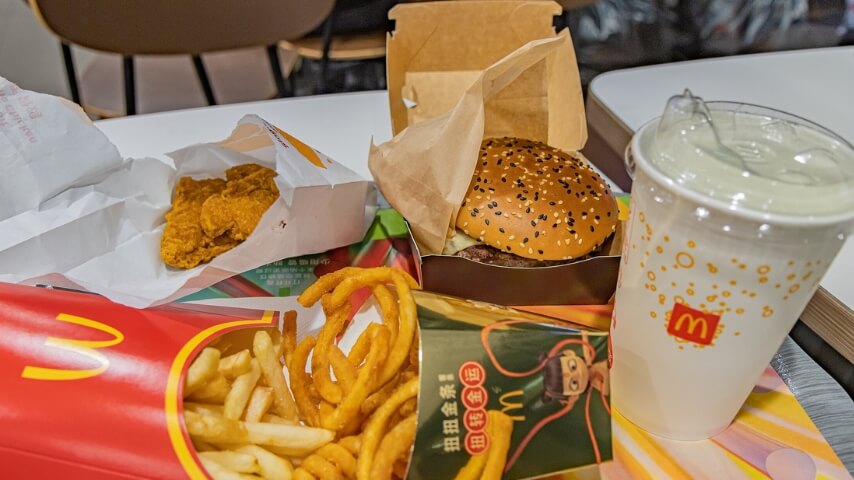Strangest fact: Ray Kroc himself pioneered the veggie burger. The man who turned McDonald’s from a small business to a globe-spanning behemoth wanted to appeal to Lent-observing Catholics who didn’t eat meat on Fridays. He test-marketed two options: the Filet-O-Fish, and the Hula Burger, which was a typical McDonald’s burger with a slice of pineapple swapped out for the beef patty. (Pineapple slices are still available as a side in the UK, and are served with every order in Hawaii.)
Thing we were happiest to learn: The rest of the world’s McDonald’s customers are eating pretty well. Australia offers a chicken parm sandwich, and “loaded fries” with gravy and an ever-changing assortment of toppings that has included guacamole, salsa, sweet chili, parmesan cheese, truffle mayo, and grilled onions. Canadians, unsurprisingly, can get poutine at McDonald’s. Canada and South Africa have a Chicken McMuffin on their breakfast menu, and Filipino locations serve rice bowls. And in India, where observant Hindus don’t eat beef and Muslims don’t eat pork, McDonald’s serves neither, instead building their menu around the Maharaja Mac chicken burger, and the McAloo Tikki burger, a breaded potato patty. India also has a few Mexican-themed items, including the Paneer Salsa Wrap, and the Chicken Mexican Wrap. You can also buy beer at McDonald’s in 10 European countries, and wine in the Argentine province of Mendoza.
Thing we were unhappiest to learn: The regional specialties weren’t the only menu items with a short lifespan. Gen X-ers well remember the McDLT, served in a container with two compartments, to keep the burger patty hot and the condiments cold, but consumers had no appreciation of science. The Fried Roast Beef Sandwich was introduced in 1968 to try and compete with Arby’s, but the roast beef slicers were so expensive that every sandwich lost money. Filipino locations sold spaghetti in the 1970s, and in 2021 a Twitter user went viral reminiscing about McSpaghetti, prompting the chain to re-introduce spaghetti in the Philippines and, for some reason, one location in Orlando, Florida.
Best link to elsewhere on Wikipedia: The obvious next step is List of Burger King products. It’s a much shorter list, as the rival chain has less international variation and rarely expands the menu outside of burgers, chicken, and fish (most of their discontinued products are relatively upscale burgers). But there are a few oddities, like the fact that the Rodeo Cheeseburger was created as a promotion for the 1998 film Small Soldiers, or that in the summer of 2010, BK sold St. Louis-style pork ribs, which were so popular the company started running out of packaging by midsummer, and cashed in on the ribs’ popularity by never bringing them back. There are also regional Texas and California Whoppers, which “demonstrate Burger King’s commitment to innovation and catering to regional flavors,” in a section of the Wikipedia page that definitely wasn’t written by Burger King’s marketing department. (The page doesn’t address the way their chicken sandwich gradually got smaller over the course of the 1990s, our own personal Mandela Effect.)
Further down the Wormhole: Another thing we were happy to learn is that there isn’t more material on the McDonald’s Urban Legends page. Most of them simply involve speculation as to what’s in their beef, ranging from cow eyeballs to earthworms to human flesh to a genetically-modified cryptid. This might be the least interesting of Wikipedia’s many, many pages devoted to urban legends, including that of the Ourang Medan, a ghost ship that haunts Indonesia’s Straits of Malacca after disappearing in the 1940s. Whether a ship by that name even existed is disputed, but this and many, many other stories of the unexplained and occult were documented by Charles Fort, a chronicler of the strange so prolific that odd phenomena are sometimes called Forteana. We’ll see if the truth is out there next month.









































